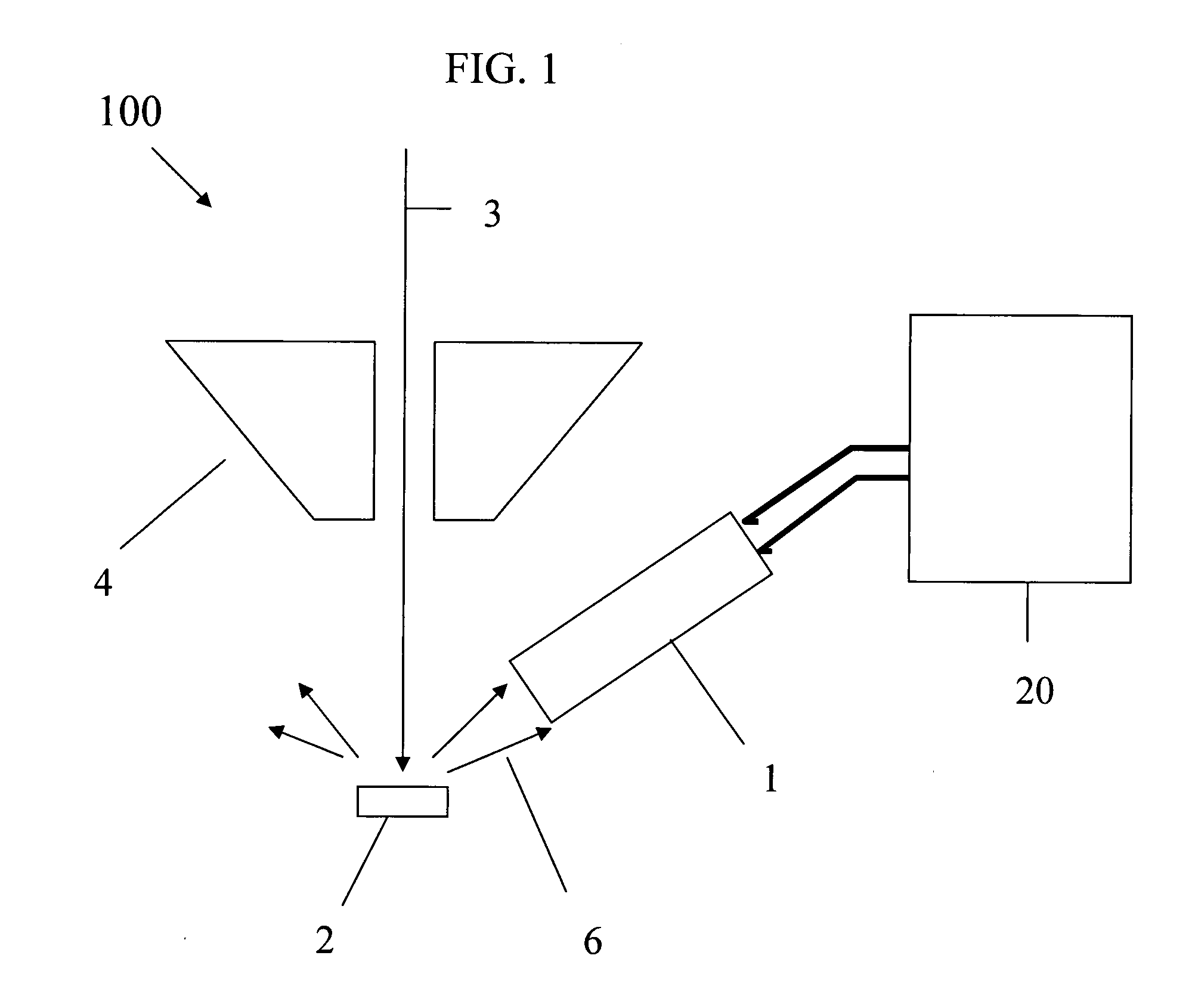Charged particle analyser and method
a particle analysis and charge technology, applied in the direction of particle separator tubes, instruments, electrical equipment, etc., can solve the problems of difficult identification of thin layers and features below 1000 nm in dimension, limited range of low energy electrons, and rare in conventional sems, etc., to achieve easy retraction, low loss, and high acceptance angle
- Summary
- Abstract
- Description
- Claims
- Application Information
AI Technical Summary
Benefits of technology
Problems solved by technology
Method used
Image
Examples
Embodiment Construction
[0049]Referring to FIG. 1, the invention as embodied in this first example is a detection device (charged particle analyser) that has an entrance aperture that, when in use, is presented towards a sample 2 in a scanning electron microscope 100 from the same side as the incident electron beam 3. The incident beam consists of electrons that have been accelerated using a high voltage Vacc (typically 1 kV to 30 kV) and focused through a microscope lens 4. The electrons all strike the specimen with essentially the same energy. The specimen is typically earthed and incident electrons penetrate the sample 2 and are scattered.
[0050]The detection device 1 uses a converging electrostatic lens to accept diverging electron trajectories 6 from a wide solid angle and redirect them down a tube towards a planar retarding grid such that they all strike the grid at approximately the same angle. With this arrangement the energy threshold at which electrons can get through the grid is similar for all t...
PUM
 Login to View More
Login to View More Abstract
Description
Claims
Application Information
 Login to View More
Login to View More - R&D
- Intellectual Property
- Life Sciences
- Materials
- Tech Scout
- Unparalleled Data Quality
- Higher Quality Content
- 60% Fewer Hallucinations
Browse by: Latest US Patents, China's latest patents, Technical Efficacy Thesaurus, Application Domain, Technology Topic, Popular Technical Reports.
© 2025 PatSnap. All rights reserved.Legal|Privacy policy|Modern Slavery Act Transparency Statement|Sitemap|About US| Contact US: help@patsnap.com



